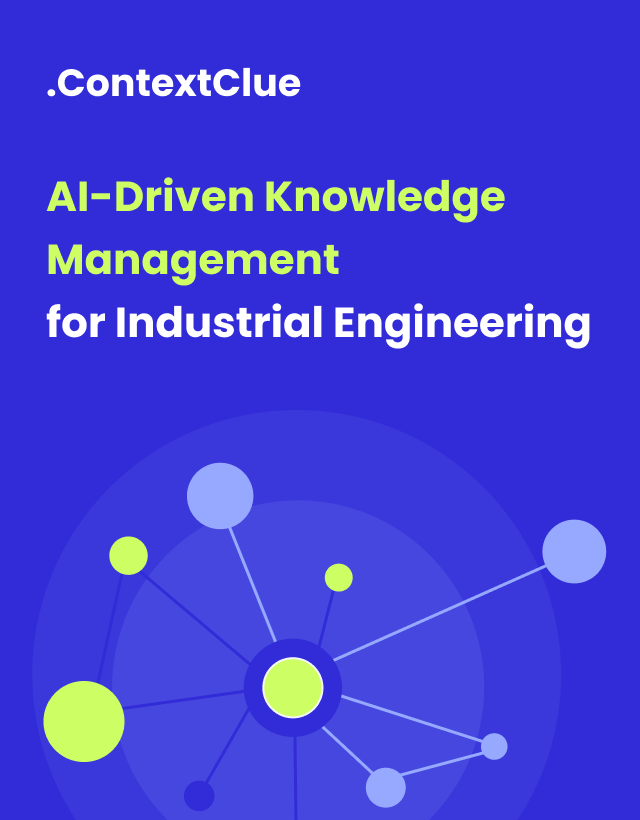
November 04, 2025
Best practices for Databricks PoC (Proof of Concept)
Author:

CSO & Co-Founder
Reading time:
9 minutes
The AI transformation race has intensified, with enterprises investing heavily in machine learning capabilities. Yet industry data reveals a sobering reality: according to Gartner, only 53% of AI projects make it from prototype to production. The primary culprits? Inadequate validation, underestimated costs, and misalignment with business objectives.
Despite its strengths, organizations still face the challenge of the costs involved when models do not perform as expected, requiring significant rework. To mitigate this risk, many leverage Databricks’ Proof of Concept (PoC) phase, a critical stage for validating model viability before full deployment.
This article explores how to effectively set up and utilize a Databricks PoC, including key objectives, design steps, and best practices.
Why Databricks for Enterprise AI PoCs?
Databricks has emerged as a leading platform for enterprise AI initiatives, offering distinct advantages for PoC execution:
- Unified Data and AI Platform
Unlike fragmented toolchains (e.g., separate data warehouses, ML platforms, and orchestration tools), Databricks provides an integrated environment where data engineering, data science, and ML operations coexist. This reduces integration risks during PoCs and accelerates time-to-insight.
- Built-in Governance and Lineage
Unity Catalog provides centralized governance, essential for PoCs involving sensitive or regulated data. Data lineage tracking ensures transparency—critical when presenting results to compliance and risk committees.
- Cost Transparency with DBU Metrics
Databricks Billing (DBU-based pricing) offers granular cost tracking per job, notebook, or cluster. This visibility enables you to project production costs accurately from PoC performance, supporting business case development.
- MLflow Native Integration
Built-in experiment tracking, model registry, and deployment capabilities streamline the PoC-to-production pathway, reducing technical debt and accelerating ROI realization.
- Collaborative Environment for Cross-Functional Teams
Databricks notebooks support multi-language development and real-time collaboration, enabling data scientists, engineers, and business analysts to work together seamlessly during validation phases.

Read more: Databricks for Business: Use cases

Why Focus on Databricks PoC?
A Databricks PoC verifies whether specific data science or machine learning concepts can be seamlessly integrated into existing business processes. It aims to assess the practical functionality, performance, and cost-efficiency of models within real-world scenarios.
By doing so, organizations can identify potential issues early, avoid costly missteps, and build stakeholder confidence through tangible results.
Benefits of a Databricks PoC
-
Reducing business risk
A well-executed PoC helps assess the feasibility of a project without heavy upfront resource investment. It detects data gaps, model flaws, or integration issues early, thus preventing costly failures downstream. -
Gaining stakeholder buy-in
Demonstrating early success helps convince decision-makers by showcasing the tangible value of AI initiatives. Effective PoCs serve as proof points to secure necessary funding for full-scale development. -
Enhancing data collection & quality
Conducting a PoC reveals strengths and weaknesses in data collection practices. It guides data enrichment efforts, ensuring models are trained on representative and high-quality data, which is vital for deployment success.
How to Defiine Strategic Objectives for Databricks PoC

Align with Business Outcomes, Not Technical Curiosity
Every data or AI initiative should begin with clear, measurable business outcomes, not just an interest in exploring technology. Frame project objectives around revenue growth, cost reduction, risk mitigation, or customer experience improvements rather than “testing AI capabilities” for their own sake.
For example, a well-defined objective might be to reduce customer churn by 15% within three months using predictive modeling. Another could be to decrease fraud detection false positives by 25% while maintaining a 99% catch rate. Or, you might aim to automate 40% of manual data quality checks, saving approximately $200K annually in operational costs.
Establish Clear Success Criteria
Set three levels of performance expectations to guide decision-making:
-
Minimum Viable Performance – the threshold below which the project should not proceed.
-
Target Performance – the expected outcome that justifies full investment.
-
Stretch Goals – exceptional results that could warrant accelerated deployment or additional funding.
This tiered approach ensures transparency and alignment across stakeholders.
Set Realistic Timelines
Define timelines that reflect the complexity of your use case and align with industry benchmarks:
-
Simple use cases (e.g., classification models on structured data) typically take 4–8 weeks
-
Complex scenarios (like NLP, computer vision, or multi-model pipelines) often require 8–16 weeks.
-
Exploratory research PoCs may run 3–6 months, but should include clear stage gates to evaluate progress and feasibility.
Define Resource Boundaries
Establish resource constraints early to prevent scope creep and ensure accountability. This includes setting a budget cap that covers both compute and personnel costs, clarifying team allocations (FTEs and percentage of time), specifying the data scope and access requirements, and defining the level of stakeholder involvement needed throughout the project.
Implementation Framework: Six Critical Phases
Phase 1: Scope Definition and Stakeholder Alignment
The first phase focuses on ensuring everyone is aligned on business objectives, governance, and data readiness. Begin with an executive alignment workshop to validate the business case and confirm measurable success metrics. Map key stakeholder, including sponsors, end users, IT, compliance, and procurement, and document decision criteria and review cadence. Establish a governance structure with a steering committee and secure all required data access and compliance sign-offs.
Within Databricks, provision the workspace using the appropriate Unity Catalog configuration, set up cost allocation tags by project or department, define user roles and access controls, and apply cluster policies to prevent cost overruns.
Deliverable: A project charter outlining approved objectives, timeline, and budget.
Phase 2: Data Assessment and Preparation
Next, perform a detailed assessment of data quality, completeness, and bias across existing sources. Identify data gaps and define plans for collection or enrichment, ensuring privacy compliance with regulations such as GDPR or CCPA. Evaluate data volume and velocity to anticipate production scaling needs.
Leverage Delta Lake for versioning and reproducibility, use data quality monitoring tools like Expectations or Great Expectations, and manage access centrally through Unity Catalog. The Photon engine can accelerate ETL for large datasets.
Common pitfalls include relying on non-representative data samples, ignoring data drift between PoC and production, or underestimating data refresh requirements.
Deliverable: A data readiness assessment summarizing quality metrics and a gap remediation plan.
Phase 3: Model Development and Experimentation
With data prepared, establish a baseline model using simple heuristics or existing solutions, then iteratively refine architectures and hyperparameters. Track all experiments for reproducibility and conduct bias and fairness analyses throughout.
Databricks best practices include using MLflow for experiment tracking, leveraging AutoML to establish baselines quickly (reducing development time by 40–60%), and using Databricks Assistant for code optimization. A feature store ensures consistency between training and inference pipelines.
Recommended tools vary by use case:
- Structured data: XGBoost, LightGBM
- NLP: Hugging Face Transformers
- Time series: Prophet or LSTM (via TensorFlow/PyTorch)
- Deep learning at scale: Horovod for distributed training
Deliverable: A model performance report with MLflow experiment links and full reproducibility documentation.
Phase 4: Validation and User Acceptance Testing
Simulate production conditions – including data volume, latency, and concurrency – and engage business users for user acceptance testing (UAT). Conduct A/B testing against current processes and validate model explainability and interpretability.
Testing should cover multiple dimensions:
- Functional: Accuracy of outputs
- Performance: Latency and throughput under load
- Robustness: Behavior under edge cases and low-quality data
- User Experience: Ease of use for business stakeholders
Databricks supports this phase with Model Serving endpoints for low-latency inference, Databricks SQL dashboards for validation, and integrations with Tableau or Power BI for seamless business adoption.
Deliverable: A validation report with user feedback, performance benchmarks, and a clear go/no-go recommendation.
Phase 5: Cost Analysis and Production Readiness Assessment (Weeks 9–12)
Before scaling to production, conduct a detailed cost analysis across compute, storage, and operational dimensions.
For compute, review PoC cluster costs, project production-scale expenses using the Databricks pricing calculator, and calculate cost per prediction or transaction—a key ROI metric. For storage, estimate Delta Lake growth and define retention and archival policies. Operational analysis should cover model retraining frequency, monitoring infrastructure, and personnel requirements for MLOps and data engineering support.
Apply optimization strategies such as using Job Clusters (terminated after job completion) instead of all-purpose clusters, Spot Instances for fault-tolerant jobs (30–50% savings), and right-sizing clusters based on utilization. Consider Serverless SQL to eliminate idle compute, and schedule non-urgent workloads during off-peak hours for lower DBU rates.

Read more: Mastering Databricks Deployment: A Step-by-Step Guide

Databricks Cost Governance
Effective cost governance ensures that Proofs of Concept (PoCs) deliver measurable value without unexpected overruns. In a typical enterprise PoC, personnel costs account for the majority of the budget (60–70%), followed by Databricks compute and storage (20–30%), data acquisition or enrichment (5–10%), and a contingency reserve (around 10%) to handle unforeseen technical challenges. Depending on complexity, real-world PoC costs range from $15K–$40K for small structured-data use cases to $150K–$300K for large-scale, production-simulated projects.
To maintain financial control, organizations can apply Databricks Budget Alerts, enforce cluster policies and auto-termination, and tag all resources by project or cost center for precise tracking. Weekly cost reviews and approval workflows for high-cost clusters further prevent budget drift. Estimating production costs early is equally critical—using the formula
Production Cost = (PoC Cost ÷ PoC Data Volume) × Production Data Volume × Efficiency Factor, where efficiency typically ranges from 0.5 to 0.7, reflecting production optimizations. A disciplined approach to cost governance not only safeguards budgets but also strengthens the business case for scaling successful PoCs into enterprise-grade AI solutions.

Read more: From Lab to Production: Mastering Enterprise Databricks Implementation

The bottom line
Well-executed Databricks PoCs serve as more than technical validation—they’re strategic instruments for de-risking AI investments, building organizational capability, and creating momentum for digital transformation.
For AI managers and innovation leaders, success requires balancing technical rigor with business pragmatism: maintaining clear objectives, controlling costs, engaging stakeholders continuously, and making evidence-based decisions.
By following this framework, you transform PoCs from speculative experiments into strategic decision gates that accelerate your organization’s AI maturity and competitive positioning.
This revised article transforms the original overview into a strategic playbook for AI managers and Heads of Innovation. It expands beyond general PoC principles to deliver actionable guidance on Databricks’ enterprise advantages (Unity Catalog, MLflow, Delta Lake, Photon), cost governance with real-world budgets and optimization models, and a six-phase implementation framework with clear timelines and deliverables.
References
[1] Helpnetsecurity.com. Generative AI Strategy. URL: https://www.helpnetsecurity.com/2023/07/25/generative-ai-strategy/. Accessed August 24, 2023
[2] Kdnuggets.com. The Significance of Data Quality in Making a Successful Machine Learning Model. URL: https://www.kdnuggets.com/2022/03/significance-data-quality-making-successful-machine-learning-model.html. Accessed August 24, 2023
[3] Tech.gsa.gov. Agile Investment – Proof of Concept Phase Checklist. URL: https://tech.gsa.gov/guides/agile_investment_proof-of-concept_phase_checklist/. Accessed August 24, 2023
[4] Coopervision.ca. The Importance of Key Performance Indicators. URL: https://coopervision.ca/practitioner/practice-building/key-performance-indicators-kpis. Accessed August 24, 2023
Category:






